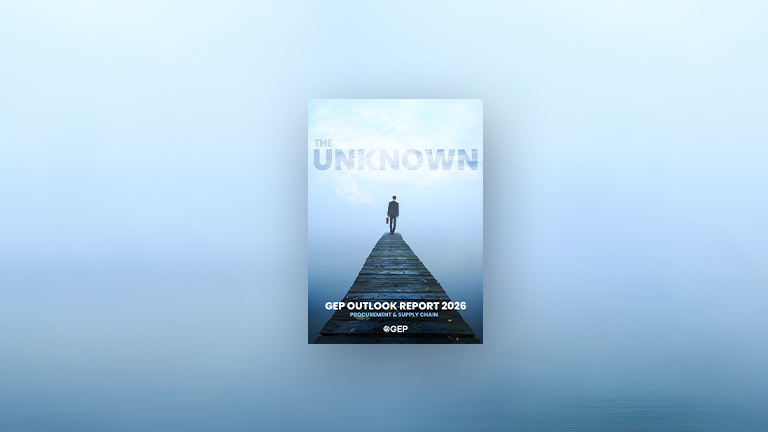
Why Stakeholder Management Is Key to Procurement’s Success
- Stakeholder management involves identifying, building, and managing relationships with individuals or groups involved in procurement activities.
- Procurement stakeholders include external suppliers and internal business teams.
- The widespread adoption of procured goods and services among internal teams validates the success of the procurement project.
September 03, 2025 | Procurement Strategy 4 minutes read
Who said procurement is a tactical function focused merely on negotiating contracts and reducing costs? Advancements in technology have set aside this view and transformed procurement into a strategic business unit.
In many enterprises, procurement is now seen as a key business function that can align its routine tasks with larger business goals.
But it’s not just about technological advancements. It’s also about meeting the expectations of different stakeholders – internal and external.
How can procurement keep all stakeholders aligned and moving in the same direction? Let’s find out and identify the key stakeholders first.
Can Procurement Work Closely with Internal and External Stakeholders?
Leverage AI-Powered Technology to Connect All Stakeholders
Who Are the Key Stakeholders?
Procurement isn’t a solo function. It’s a team effort that involves multiple stakeholders. In routine operations, procurement deals with external suppliers, internal executives, and cross-functional business teams with competing priorities.
External stakeholders include suppliers, vendors and supply chain partners. Negotiating pricing and maintaining healthy relationships with suppliers are the key responsibilities of procurement. Regular interaction with suppliers also means that procurement is ideally placed to monitor their performance over time.
Business teams that use what you procure are the end-users and internal stakeholders. In many ways, the success of procurement can be evaluated based on the product adoption and user experience of end-users.
Procurement also works closely with finance and legal teams to meet budget and regulatory requirements, respectively.
Why Is Stakeholder Management Important
Skilled buyers understand their job isn’t reactive. They conduct due diligence prior to making business decisions. This ensures that they choose products or services that are the best fit for the business.
As part of due diligence, they need to identify all stakeholders and communicate with them to understand their requirements. Early engagement with stakeholders allows procurement to leverage their insights to enhance project design and execution. It also promotes transparency and trust and aids in identification of potential risks.
Often, procurement teams know who the project stakeholders are. But if unsure, they must brainstorm, ask colleagues, review documentation, or conduct some research to establish who they need to engage with.
Mapping out stakeholders at the beginning of a project may seem to be a time-consuming exercise, but it can add a lot of value and contribute to a well-managed process. Without understanding who the stakeholders are, procurement is not likely to succeed in achieving the key requirements of the project.
Struggling to Align Procurement and Supply Chain Operations?
Here’s How AI-Powered Procurement Technology Can Help
Ways to Improve Stakeholder Management
Here are some ways procurement can effectively manage and engage with stakeholders.
• Understand the business
To build trust with stakeholders, procurement must first dive deep into business operations. Procurement professionals who understand the business are best placed to meet stakeholder requirements. Engage with sales and marketing to understand the products, competition, brand, and positioning. Talk to different internal teams to understand business operations.
• Align goals with stakeholder requirements
While cost savings is a key goal of procurement, it may not be the only thing on the stakeholders’ mind. Stakeholders often have to deliver on multiple key metrics and that is where their primary focus is. Cost savings can help them to get this done within the allocated budget, and that is where procurement comes in.
• Keep communication channels open
Stakeholders must be able to access different communication channels. Procurement needs to ensure that stakeholders know how to reach out to them. Encourage open dialogue to allow stakeholders to share their insights, concerns, and feedback.
• Organize review meetings
Set up periodic review meetings with internal teams to discuss their pain points, ask questions, and gather feedback. Such meetings can help engage and build relationships with internal stakeholders.
• Invest in continuous education and training
Always keep stakeholders informed about procurement processes, industry trends, and best practices. This allows stakeholders to actively participate in discussions and contribute their inputs to decision-making processes.
Can Procurement Measure Stakeholder Engagement?
You can only improve something when you can measure it. While CPOs don’t have an objective way to measure stakeholder engagement, they can adopt some informal ways for this purpose. For example, they can do an internal customer satisfaction survey to gather feedback about procurement from internal teams.
For external stakeholders, procurement can visit suppliers, see their operations closely, and assess how they can benefit your business.
Increased spend under management is another way to assess supplier engagement. The more engaged your stakeholders are, the more is the spend under management.
Procurement’s Influence Starts with Alignment
Looking ahead, stakeholder engagement will shape how procurement earns influence and delivers results. As the function becomes more strategic, its success will hinge on alignment with internal priorities and external realities. Strong relationships and clear communication will position procurement as a valued partner across the enterprise.



